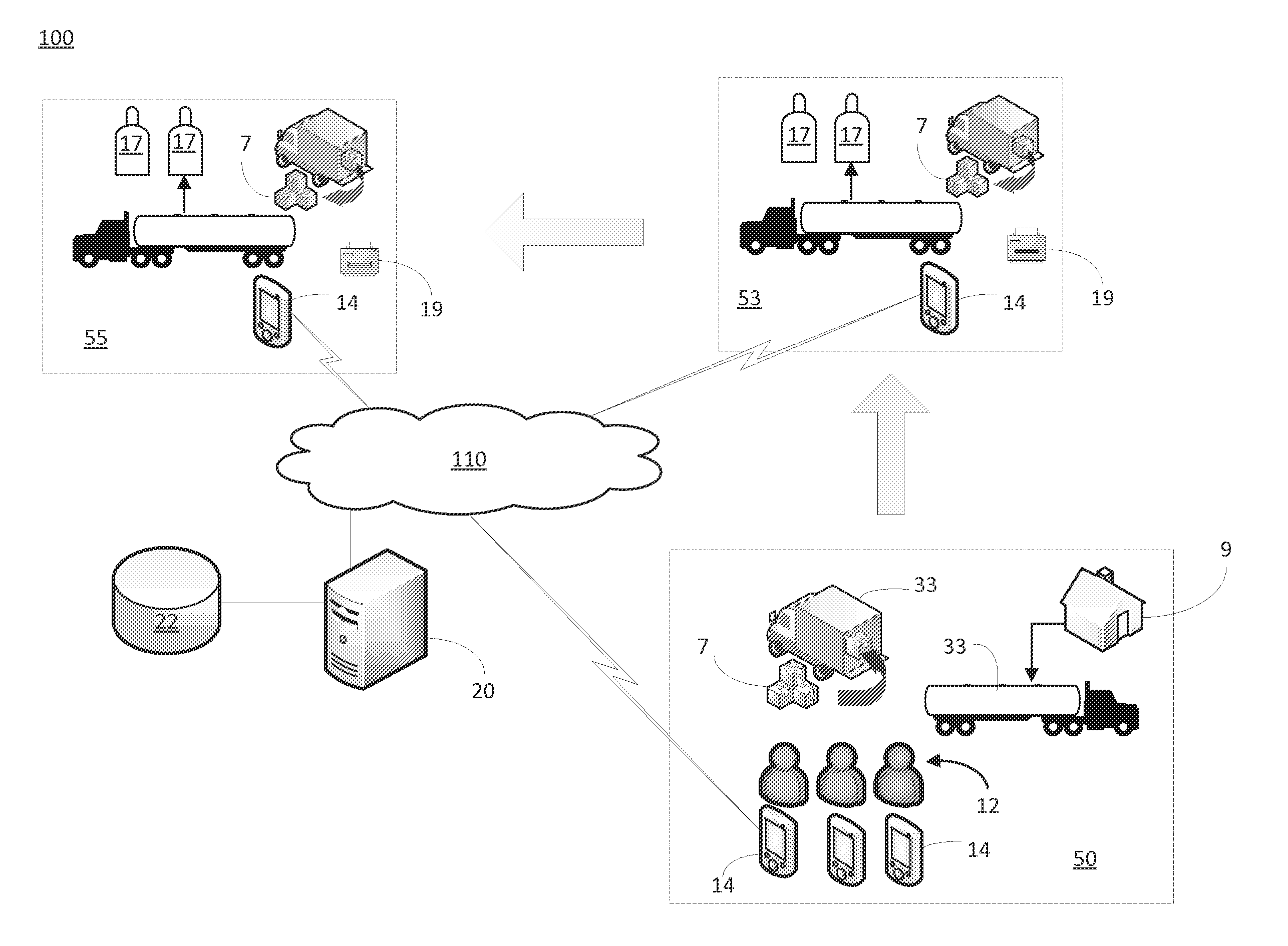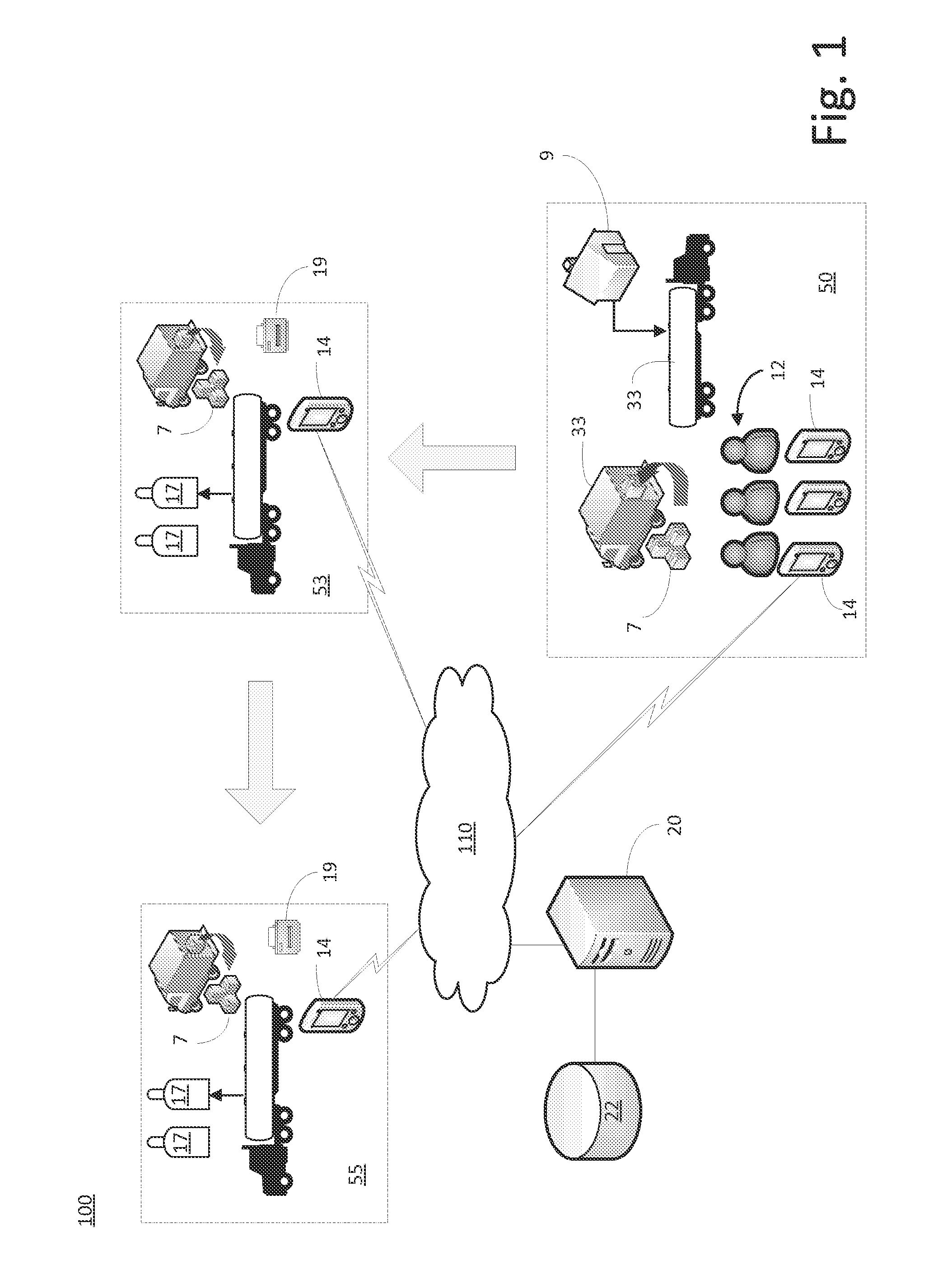Method and system for monitoring deliveries
a technology for monitoring products and deliveries, applied in the field of methods and systems for monitoring products, can solve problems such as product undeliverability, product delivery cannot be delivered, and logistically difficult product delivery
- Summary
- Abstract
- Description
- Claims
- Application Information
AI Technical Summary
Benefits of technology
Problems solved by technology
Method used
Image
Examples
Embodiment Construction
[0043]FIG. 1 shows an example system 100 for monitoring deliveries according to an example embodiment of the present invention. The system 100 may include a central computer, e.g. a server 20, that communicates with a plurality of delivery agents 12 through portable computers 14 respectively operated by the agents 12. A communication network 110 wirelessly connects the server 20 to the computers 14. In one embodiment, the network 110 is a mobile phone network (e.g., a 3G or 4G network) and the computers 14 are smartphones. The availability of wireless access varies by location, so the technology used to implement the network 110 may depend on where the system 100 is located. It may also depend on the distances over which the system is expected to communicate with the users 12 (e.g., mobile phone networks have a significantly greater range compared to Wi-Fi) and how fast the system 100 needs to communicate. Therefore, the network may be selected based on communication requirements.
[0...
PUM
 Login to View More
Login to View More Abstract
Description
Claims
Application Information
 Login to View More
Login to View More - R&D
- Intellectual Property
- Life Sciences
- Materials
- Tech Scout
- Unparalleled Data Quality
- Higher Quality Content
- 60% Fewer Hallucinations
Browse by: Latest US Patents, China's latest patents, Technical Efficacy Thesaurus, Application Domain, Technology Topic, Popular Technical Reports.
© 2025 PatSnap. All rights reserved.Legal|Privacy policy|Modern Slavery Act Transparency Statement|Sitemap|About US| Contact US: help@patsnap.com



